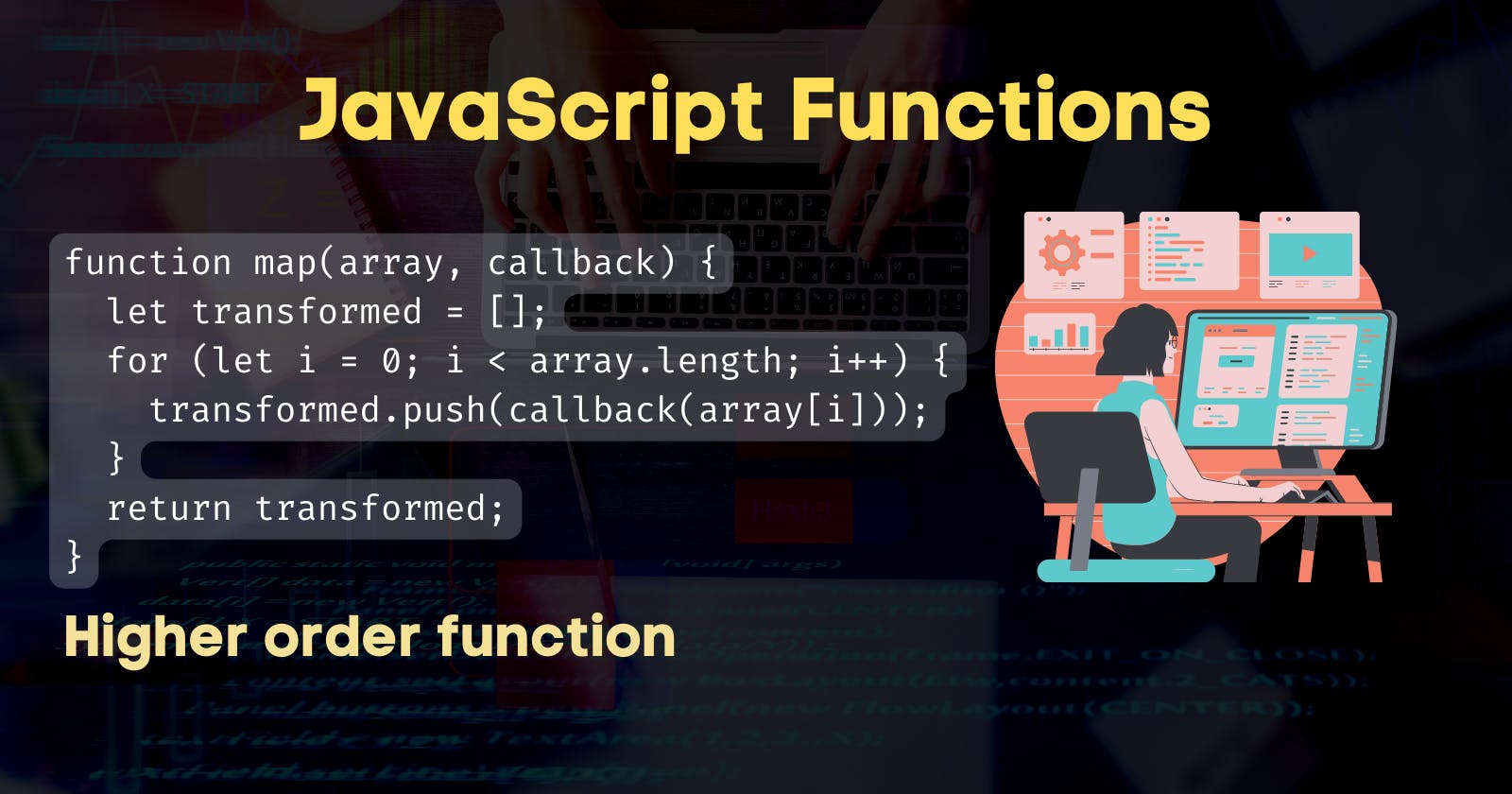JavaScript Functions and Functional Programming: An Introduction to Higher-Order Functions and Pure Functions
JavaScript functions are a fundamental concept in the JavaScript programming language, and understanding how to work with them is essential for any web developer. In this article, we'll explore the concept of functional programming in JavaScript, and how it can be used to write more powerful and reusable code using higher-order functions and pure functions.
Introduction to Functional Programming
Functional programming is a programming paradigm that emphasizes the use of functions to solve problems and manipulate data. It is based on the idea that a function is a first-class citizen, meaning that it can be treated like any other value in the language and can be passed around and manipulated just like any other data type.
In functional programming, functions are treated as pure functions, meaning that they have no side effects and always return the same output given the same input. This makes it easier to reason about and predict the behavior of your code, as you don't have to worry about external factors or state changes affecting the output of your functions.
Functional programming also relies on the use of higher-order functions, which are functions that take other functions as arguments or return them as output. Higher-order functions allow you to create more flexible and reusable code, as you can create functions that can be customized and adapted to different scenarios using other functions.
Higher-Order Functions
In JavaScript, you can create higher-order functions using the same syntax as you would for any other function. For example, you can create a higher-order function called "map" that takes an array and a callback function as arguments, and applies the callback function to each element in the array to create a new array of transformed elements:
function map(array, callback) {
let transformed = [];
for (let i = 0; i < array.length; i++) {
transformed.push(callback(array[i]));
}
return transformed;
}
// Example usage of the map higher-order function
let numbers = [1, 2, 3, 4, 5];
let doubled = map(numbers, (x) => x * 2);
console.log(doubled); // Outputs [2, 4, 6, 8, 10]
In this example, the "map" function takes an array of numbers and a callback function that doubles each number, and returns a new array with the doubled numbers.
There are many built-in higher-order functions in JavaScript that you can use to perform common tasks, such as map, filter, and reduce. There are also many third-party libraries, such as Lodash and Ramda, that provide additional higher-order functions for working with arrays and other data structures.
Pure Functions
In functional programming, it's important to use pure functions whenever possible, as they have several benefits over impure functions. Pure functions are functions that have no side effects and always return the same output given the same input. This makes them easier to reason about and predict, as you don't have to worry about external factors or state changes affecting the output of the function.
To create a pure function in JavaScript, you should avoid making any changes to external state or interacting with external resources, such as reading or writing to a database or making an HTTP request. Instead, you should rely on the input arguments to the function to determine the output.
Here's an example of a pure function that adds two numbers:
function add(x, y) {
return x + y;
}
console.log(add(1, 2)); // Outputs 3
console.log(add(1, 2)); // Outputs 3
In this example, the "add" function is pure, as it always returns the same output given the same input, and it doesn't have any side effects. Conclusion
In conclusion, functional programming is a powerful programming paradigm that allows you to write more powerful and reusable code using higher-order functions and pure functions. Understanding and using functional programming techniques in JavaScript can help you to create more reliable and maintainable code, and can make it easier to reason about and predict the behavior of your code. If you want to learn more about functional programming in JavaScript, there are many online resources available to help you get started.
It's worth noting that functional programming is just one of many programming paradigms, and it's not always the best fit for every situation. In some cases, other paradigms, such as object-oriented programming or procedural programming, may be more suitable. It's important to choose the right paradigm for your specific problem and context, and to be familiar with multiple paradigms so that you can choose the best one for the task at hand.
Overall, functional programming is a valuable tool in the JavaScript developer's toolkit, and understanding how to use it can help you to create more powerful and flexible web applications. Happy coding!
